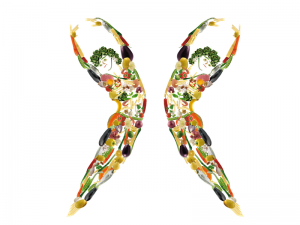Pain is the primary reason people go to the doctor, but 1 in 3 general practitioners (GPs) reports feeling “unprepared” to treat pain. While this may frustrate you, it’s not their fault because, like most healthcare professionals (HCPs), we receive little or no training around the pain that doesn’t go away as expected during our lengthy training. The result; most (GPs & HCPs) can’t explain pain to those affected by it; you and me.
Explaining pain is tricky and problematic, even amongst healthcare professionals. The worlds of medicine and science often classify pain differently, leading to misunderstandings and confusion between those affected, their loved ones and those who care for them. The terms acute and chronic might be familiar to you, but let’s unpack these terms a little by using the example of stubbing your toe on the way to the lavatory. A random sample, perhaps, but we’ve all done it or know someone who has, and it can be excruciating.
- Acute pain is the pain felt when you first stub your toe; it is the big short-term ouch, ouch!
- Sub-chronic pain is when your stubbed toe is still painful six-eight weeks later.
- If your toe is still hurting 12 weeks after the injury, your injury has become a chronic condition, sometimes also known as persistent or ongoing pain.
 Did you know?
Did you know?
More than 95% of people with painful back and neck problems, including ‘trapped’ nerves, don’t need surgery to make a recovery. These folks fall into three main groups – those who don’t want surgery, those for whom surgery isn’t the proper intervention, and those who’ve had surgery but still have a problem.
When asked this question in 2016, Prof. Lorimer Molesley, one of the world’s leading pain scientists, wrote, “Pain scientists reasonably agreed that pain is an unpleasant feeling in our body that makes us want to stop and change our behaviour. We no longer think of pain as a measure of tissue damage–it doesn’t work that way, even in highly controlled experiments. We now consider pain a complex and highly sophisticated protective mechanism.”
Pain experts accept that pain is not merely imagined or only in individuals’ heads. Our emotional state can influence how we experience unpleasant sensations and feelings, including pain. It will often worsen when people are tired, depressed, anxious, grieving, or living through traumatic or stressful situations. During these states, the brain senses threat more readily and will trigger a stress response to protect itself and your body.
The consequences of this can be a vicious cycle that goes something like this. Pain sets off a sequence of emotions, such as fear and anxiety; this is accompanied by a cascade of chemicals and hormones, which are part of our natural stress response and result in an inflammatory reaction in the body. Some are useful but also cause muscles to become tense and achy. Unfortunately, this “highly sophisticated protective mechanism.” can go haywire if these chemicals hang around for too long, the discomfort will worsen, and the stress response will also increase, so the cycle continues.
 Chronic pain is also a cold caller! In some people, pain can occur without any injury or trauma. It is not uncommon for chronic pain to appear long after the original injury; this could be months or years later. For these folks, pain becomes an invisible debilitating part of their daily life.
Chronic pain is also a cold caller! In some people, pain can occur without any injury or trauma. It is not uncommon for chronic pain to appear long after the original injury; this could be months or years later. For these folks, pain becomes an invisible debilitating part of their daily life.
Some specialists divide chronic pain into two groups:
- Inflammatory pain because of ongoing physical injury, such as nerve damage, is also called neuropathic pain. Or because of a tumour, also called nociceptive pain.
- The other group is brain-induced or neural-pathway-induced pain because the nervous system is the root cause.
Chronic pain can move around from one body part to another, vary in intensity, be triggered by the most innocent of situations and be difficult to attribute to a specific event or cause. All this can be very upsetting and stressful for those affected and their loved ones. Worst of all, some health professionals still have a poor understanding of the complexity of this pain and, therefore, do not serve their patients well.
Did you know?
There are many simple strategies for reducing and managing persistent pain; ask me how.







